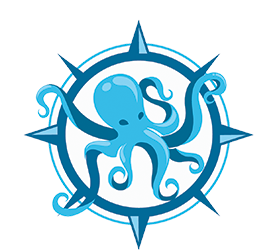MARINA FLAMINGO 🇨🇷 COSTA RICA
MARINA FLAMINGO 🇨🇷 COSTA RICA SPONSORS THE PANAMA POSSE
10° 26.3833' N 085°47.3166' W
We are happy to confirm that for your event: Panama Posse to offer a 20% discount on all the Transient Dockage Rates and to offer a special tender tender service fee at $50+IVA.

CONTACT
Email:
reservations: marina@visitmarinaflamingo.com
Morgan Osborne
morgan@visitmarinaflamingo.com

Address
Playa Flamingo, Costa Rica
Phone
+506-8977-9360 | (833 MF-YACHT)
+506-8765-6006

AMENITIES
- Fuel Station
- In Slip Pump Out
- Dock Boxes
- Heli Port
- Concierge
- Electricity
- 24-7 Security
- Restrooms & Showers
- Parking
- Fiber Optic Internet
- Trash and Recycling
- Emergency Services
- Coast Guard Station

RATES

DOCUMENTS
- Copy Certificate of Registry of the vessel.
- Crew List
- Copy crew passports (front page only)
- Boat Liability Insurance ($1,000,000)
- Copy of the Power of Attorney or Letter of Authority, issued by owner’s vessel to his captain, authorization to sailing through international waters (copy notarized)
- Copy last international clearance or ZARPE issued at last port of call

LOCATION
SAFE APPROACH
OFFICIAL WEBSITE
NEARBY
- Llanos de Cortes
- Guachipelin Volcano
- Rincon de la Vieja
- Palo Verde
- La Leona Waterfall
- Catalina Islands
- Whitewater Rafting
- Scuba Diving
- Monteverde Cloud Forest
- Miravalles volcano
- Rio Celeste
- Surfing
- Scuba
- Snorkel
- Horseback Riding
EVENT RSVP SAIL TO COSTA RICA / SAN DIEGO / PANAMA POSSE
WED OCTOBER 26 2022 4 PM - 11 PM
@ SAFE HARBOR SOUTH BAY EVENT CENTER ° SAN DIEGO
Directions >>
YACHTS RSVP
COSTA RICA SAILING SPONSORS 🇨🇷 THE PANAMA POSSE
COSTA RICA SAILING SPONSORS 🇨🇷 THE PANAMA POSSE
Hi Panama Posse.
The Sailing Center and Hemingway’s bar & restaurant are open for business. The Sailing Center offers sailing instruction, kayak & paddle board rentals, fishing tours, sailing tours, and much more. While we do offer memberships to those living in the area, we are open to the public and happy to introduce new folks to our beautiful area.

Jeff
Costa Rica Sailing & Boating, LLC
Playa Potrero, Costa Rica
506-8699-7289
jeff@costaricasailing.com
jeff@costaricasailing.com
AMENITIES
- MOORING BALL UP TO X TONS
- SHORE WATER TAXI
- BOATMINDERS
- POOL
- YOGA
- SPA
- RESTAURANT
- BBQ
- BICYCLE RENTALS
- BAR
- SHOWERS
- SURFBOARD RENTALS
SAFE APPROACH
LOCATION
VIDEO
OFFICIAL WEBSITE >>





